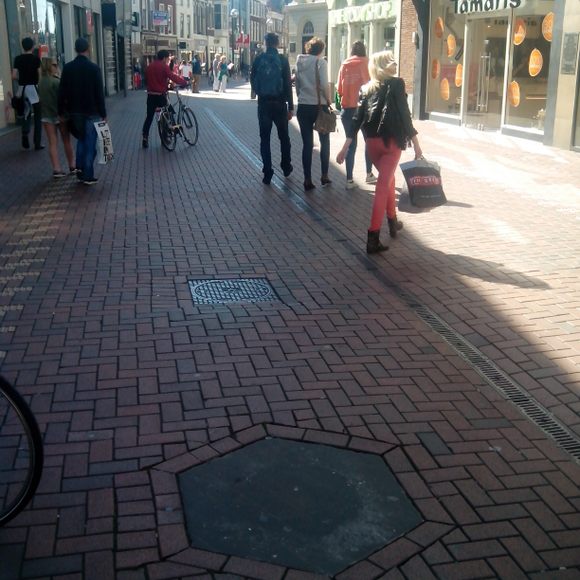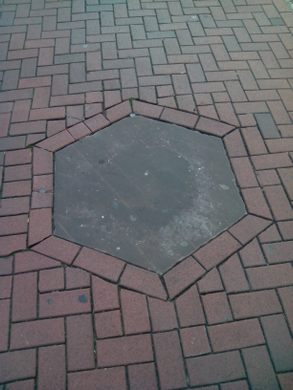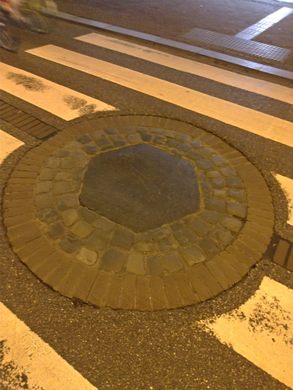Leiden Stones
A trio of red, white, and blue stones embedded in the streets of Leiden are markers of medieval territory and law.
Throughout the streets of the city of Leiden in the Netherlands there are large hexagonal stones embedded into the ground, and while today the Leiden Stones (Red, White, and Blue), no longer carry much meaning, they once divided the city into different districts.
The Red Stone is a hexagonal sandstone block dating from the early 14th century which is embedded into the ground of the Haarlemmerstraat shopping district. Historically it had two functions, namely as a border between two parishes and as a central spot for practicing public law.
North of the stone would be the parish of the Onze Lieve Vrouwe Kerk (The Church of St. Mary) and south of it would be the parish of the St. Pancras Church (now known as Hooglandse Kerk). On this stone the Schout (a sort of sheriff) of Marendorp, a village which was annexed by Leiden in 1355, would judge local affairs. The stone also served as a symbolic border between his land and the city’s lands.
Not far from the Red Stone is the White Stone. The White Stone is another hexagonal sandstone tile which is embedded into the ground, this time on the Visbrug bridge. This stone was also used both as a dividing point and as a place for the viscount’s law to be carried out. The White Stone marked the borders of the St. Pancras Church parish and that of St. Pieter (now known as the Pieterskerk church). The current White Stone is a replica of the original, put into place in 1988 during a big renovation of the area.
The last of the Leiden Stones, the Blue Stone, is embedded into the ground of the bustling Breestraat. When it was installed, north of the stone was the land of the viscount, who lived in the castle in the centre of Leiden. The Blue Stone was a symbolic border between his land and the city’s lands. It also served as the central point of the city and was used for execution of public law, which means that many punishments and executions were held here. The Blue Stone is a replica from the 1920’s, put there to restore this historical site. The original stone was removed to make place for a horse drawn train.
While the borders and laws that once necessitated the installation of the Leiden Stones are long since gone, the stones themselves continue to remember the deep historical roots of the city.
Lat/long on map is for the blue stone, but the white and red stones are nearby.
Know Before You Go
From the Blue Stone on the Breestraat walk into the Maarsmansteeg and keep walking until you see a bridge. Cross the bridge and keep walking straight. On the next bridge you'll find the White Stone. If you keep walking in the same direction, past the Donkersteeg, you'll see the Red Stone where this street crosses the Haarlemmerstraat.




























Follow us on Twitter to get the latest on the world's hidden wonders.
Like us on Facebook to get the latest on the world's hidden wonders.
Follow us on Twitter Like us on Facebook